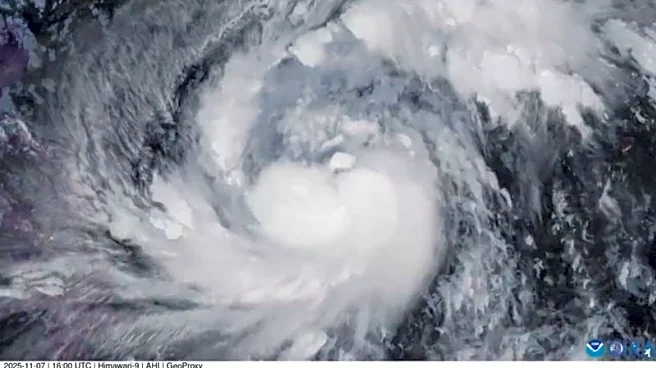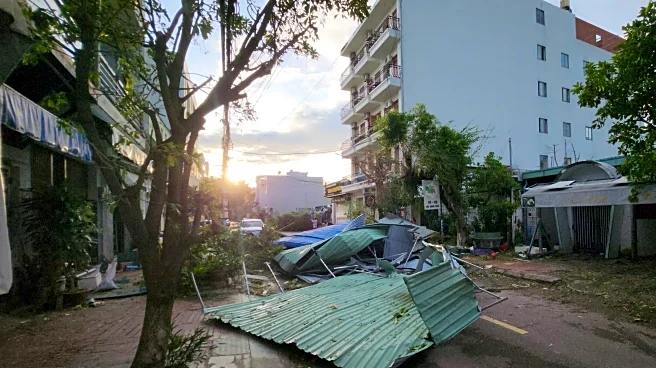What's Happening?
Super Typhoon Fung-Wong, the largest storm to threaten the Philippines this year, is causing widespread evacuations and power outages as it approaches the northeastern coast. Nearly a million people have
been evacuated from high-risk areas, including Bicol, a region vulnerable to cyclones and volcanic mudflows. The typhoon, with winds up to 185 kph and gusts of 230 kph, is expected to make landfall in Aurora or Isabela province. The storm's wide rain and wind band could affect two-thirds of the archipelago, exacerbating the devastation caused by Typhoon Kalmaegi earlier this week.
Why It's Important?
The Philippines faces significant challenges due to its geographical vulnerability to natural disasters, including typhoons, earthquakes, and volcanic activity. Super Typhoon Fung-Wong's impact could be catastrophic, affecting millions and disrupting daily life in metropolitan Manila, the country's financial center. The storm's potential to cause life-threatening storm surges and flooding underscores the need for effective disaster preparedness and response strategies. The U.S. and Japan have offered assistance, highlighting international cooperation in disaster management.
What's Next?
Authorities have preemptively closed schools and government offices in northern provinces, with flight cancellations and port closures expected to continue. The Office of Civil Defense warns of hazards affecting over 30 million people, urging compliance with evacuation orders. Recovery efforts will focus on infrastructure repair and humanitarian aid, with international support anticipated.













